When considering assisted living care, it’s essential to grasp the various levels of support tailored to individual needs. Each person’s situation is unique, requiring a thorough needs assessment to identify the right care. Financial implications also play a significant role, as costs can differ widely based on the level of assistance required. By understanding these facets, you can better navigate the complexities of assisted living and guarantee the best possible outcomes for your loved ones. What comes next might surprise you.
Key Takeaways
- Assisted living offers varying levels of care to cater to individual resident needs, from basic support to extensive assistance.
- Regular assessments evaluate physical, mental, and medical needs to tailor personalized care plans effectively.
- Monthly costs for assisted living typically start around $4,885, with additional fees for specific services like medication management.
- Family involvement is crucial in care planning, as their insights aid in shaping supportive and effective care environments.
- Ongoing reevaluation of care plans ensures that support aligns with residents’ changing needs and enhances overall well-being.
Understanding Assisted Living and Its Levels of Care

When considering assisted living, it’s essential to understand that these communities offer varying levels of care tailored to meet individual resident needs.
Each facility may provide three, five, or six distinct care levels, reflecting the specific assistance required. For instance, residents needing minimal help might thrive in a basic level, while those requiring extensive support may be placed in a higher tier.
Factors like daily living activities, medication management, and specialized care shape these levels. By comprehending the structure of care options, you can make informed decisions, ensuring the best fit for yourself or your loved one in a supportive environment.
Assessing Individual Needs for Proper Care
Understanding the specific needs of individuals is essential for determining the most appropriate level of care in assisted living settings. You’ll undergo a needs assessment, which evaluates your physical and mental well-being, mobility, and any medical conditions.
This process helps identify whether you require basic support, hands-on assistance, or ongoing care. Care plans are tailored to your unique situation, ensuring you receive the right level of help.
Family members are often encouraged to participate in these assessments, providing valuable insights into your daily routines and preferences, ultimately leading to a more personalized and effective care experience in your new community.
Financial Insights Into Assisted Living Costs

Maneuvering through the financial landscape of assisted living costs can feel overwhelming, especially as you consider the various levels of care available to meet your needs.
Monthly charges typically start around $4,885 for a one-bedroom apartment, but they can vary considerably based on the level of assistance required. For low-care needs, costs may be around $519, while high-care needs can reach $2,235.
Additional fees, like medication management, could add another $500. Understanding these financial implications is essential, as exploring options like insurance and government assistance can help alleviate some of the burden, ensuring you find the right fit for your situation.
The Importance of Regular Care Plan Reevaluation
Regularly reevaluating care plans is critical to guarantee that the support provided to residents aligns with their evolving needs, especially as health conditions change over time.
By conducting assessments at least quarterly or semi-annually, you ascertain that care reflects any shifts in physical or mental well-being. Family observations can play an important role in prompting these reviews, as loved ones often notice changes that may go undetected.
Additionally, addressing concerns about peers needing more assistance fosters a supportive community.
Ultimately, such proactive measures enhance safety and well-being, allowing residents to receive the most appropriate care tailored to their unique situations.
Ensuring Consistency in Care Delivery

While shifting into assisted living can be a significant adjustment for residents, ensuring consistency in care delivery is essential for fostering a sense of security and comfort.
When caregivers consistently provide support, you’ll notice a smoother daily routine, which can greatly enhance your quality of life. Regular training and open communication among staff members contribute to this consistency, reducing confusion and improving care.
It’s important for families to advocate for these standards, ensuring that care practices remain uniform. Positive feedback from residents and their families highlights the importance of attentive care, reinforcing the need for reliable staffing in assisted living communities.
The Role of Family in Care Planning
As families navigate the complexities of assisted living care, their involvement in the care planning process is essential for ensuring that the needs and preferences of their loved ones are met.
By actively participating, you can help shape a supportive environment tailored to their unique circumstances.
Active participation is key to creating a personalized and supportive environment for your loved ones in assisted living.
Key roles for families include:
- Communicating loved ones’ preferences and routines
- Participating in care assessments and evaluations
- Advocating for necessary services and support
- Monitoring care quality and consistency
- Building relationships with caregivers and staff
Together, these efforts foster a collaborative approach that enhances the overall well-being and satisfaction of residents in assisted living communities.
Gathering Community Feedback on Care Experiences

How can gathering community feedback on care experiences enhance the quality of assisted living services?
By actively seeking input from residents and families, you can identify areas needing improvement and celebrate successes. Regular surveys, suggestion boxes, or community meetings allow everyone to voice their thoughts.
This feedback not only fosters a sense of belonging but also helps staff understand resident needs better, ultimately leading to tailored care. When facilities prioritize this communication, you’ll likely see higher satisfaction rates, stronger relationships, and improved care practices.
Frequently Asked Questions
How Do I Choose the Right Assisted Living Community for My Loved One?
To choose the right assisted living community for your loved one, start by evaluating their specific needs, including daily living activities and medical requirements.
Visit multiple facilities to assess the environment, staff interactions, and available services. Don’t hesitate to ask about care levels and costs, as these can vary widely.
Additionally, seek feedback from current residents and their families to gauge satisfaction and quality of care.
Prioritize a community that feels welcoming and supportive.
What Are the Typical Amenities Offered in Assisted Living Facilities?
In assisted living facilities, you’ll typically find amenities like private apartments, communal dining areas, and recreational spaces.
Many offer fitness classes, social activities, and wellness programs to promote health and engagement. Some facilities provide transportation services for errands and appointments, while others may include housekeeping and laundry services.
Security features, like emergency call systems, guarantee residents feel safe. Understanding these amenities can help you choose a community that aligns with your loved one’s needs and preferences.
Can Residents Bring Personal Belongings or Furniture to Assisted Living?
Yes, you can typically bring personal belongings or furniture to assisted living. Most facilities encourage residents to personalize their space, as it helps create a sense of home.
However, there may be guidelines regarding size and type, so check with the community first. Familiar items like photos, favorite chairs, or keepsakes can enhance comfort and ease the adjustment, making your new environment feel more welcoming and familiar.
How Are Emergency Situations Handled in Assisted Living Communities?
In emergency situations, assisted living communities prioritize resident safety and swift response. Staff members are trained to handle crises, whether it’s a medical issue, fire, or natural disaster.
They communicate with emergency services and follow established protocols to guarantee everyone’s well-being. Regular drills and training help staff stay prepared, while clear communication keeps residents informed about procedures.
Your community’s commitment to safety fosters a secure environment, allowing residents to feel more at ease.
What Social Activities Are Available for Residents in Assisted Living?
In assisted living, you’ll find a variety of social activities designed to foster connection and engagement among residents.
These activities often include arts and crafts, exercise classes, game nights, and movie screenings. Many communities also organize outings to local attractions or events, encouraging interaction and camaraderie.
Bottom Line
Understanding assisted living care is essential for ensuring that individuals receive the right support tailored to their needs. By actively participating in assessments, involving family, and staying informed about costs, you can make empowered decisions. Regularly reevaluating care plans not only enhances the quality of life for residents but also fosters a sense of community and trust. With this knowledge, you can navigate the complexities of assisted living, ensuring a safe and nurturing environment for yourself or your loved ones.




